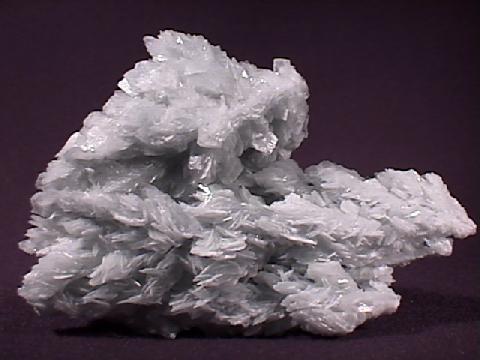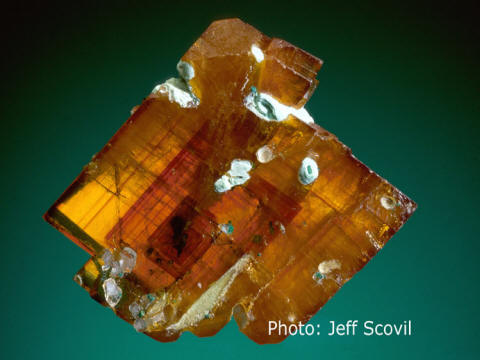| Crystal system | Orthorhombic |
| Transparency | Transparent to Opaque |
| Luster | Vitreous |
| Fracture | Uneven |
| Cleavage | 2, Perfect |
| Specific Gravity | 4.5 |
| Hardness | 2.5 to 3.5 |
| Optical Character | Biaxial + ; Double Refractive |
| Refractive index | 1.636-1.648 |
| Birefringence | 0.12 |
| Dispersion | |
| Fluorescence | Sometimes fluoresces often phosphoresces faint blue or light green under ultraviolet. |
| Pleochroism | weak |
| Chemical Formula | BaSO4 |
| Comments | Very slowly attacked by H2SO4. |
| Streak | White |
Barite (BARE-ite) is a barium sulfate (BaSO4) which ranges in color from colorless to red, yellow, green, blue and brown. Its name comes from the Greek word barys, meaning "heavy", in reference to the stone's high specific gravity. Barite is also known as heavy spar and occurs in a massive white form resembling marble. When it occurs in its transparent form, crystals tend to be highly included and some two-phase inclusions are present. A brown stalagmitic variety, with a concentric structure when cut cross-sectionally, has been polished for use as an ornamental stone. The softness and easy cleavage of barite have kept it from being used as a jewelry stone.
British Columbia and Nova Scotia, Canada, are important sources of barite. Other sources are New York State, Connecticut, Colorado, Oklahoma, and South Dakota in the United States; England; Norway; Germany; Czechoslovakia; and Spain.
Barite is very sensitive to heat and tends to fly apart in a flame; consequently, great care must be taken in all lapidary operations. Since sawing always starts cleavage, it should be avoided. In dopping, the heat must be applied very slowly and carefully. Barite may be polished on a wax lap with tin oxide or Linde A. In faceting, a crown angle of 43° and a pavilion angle of 39° are best.



